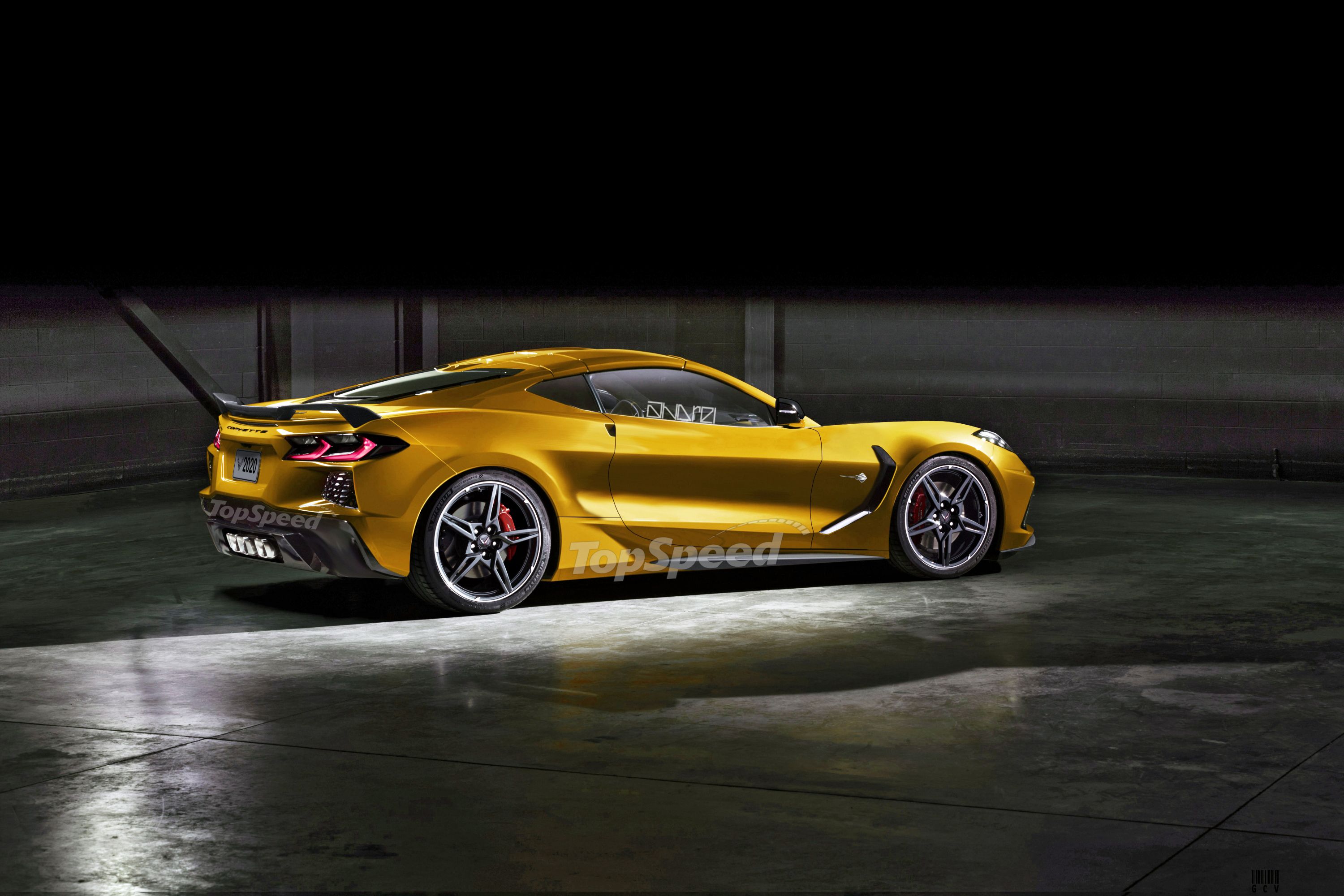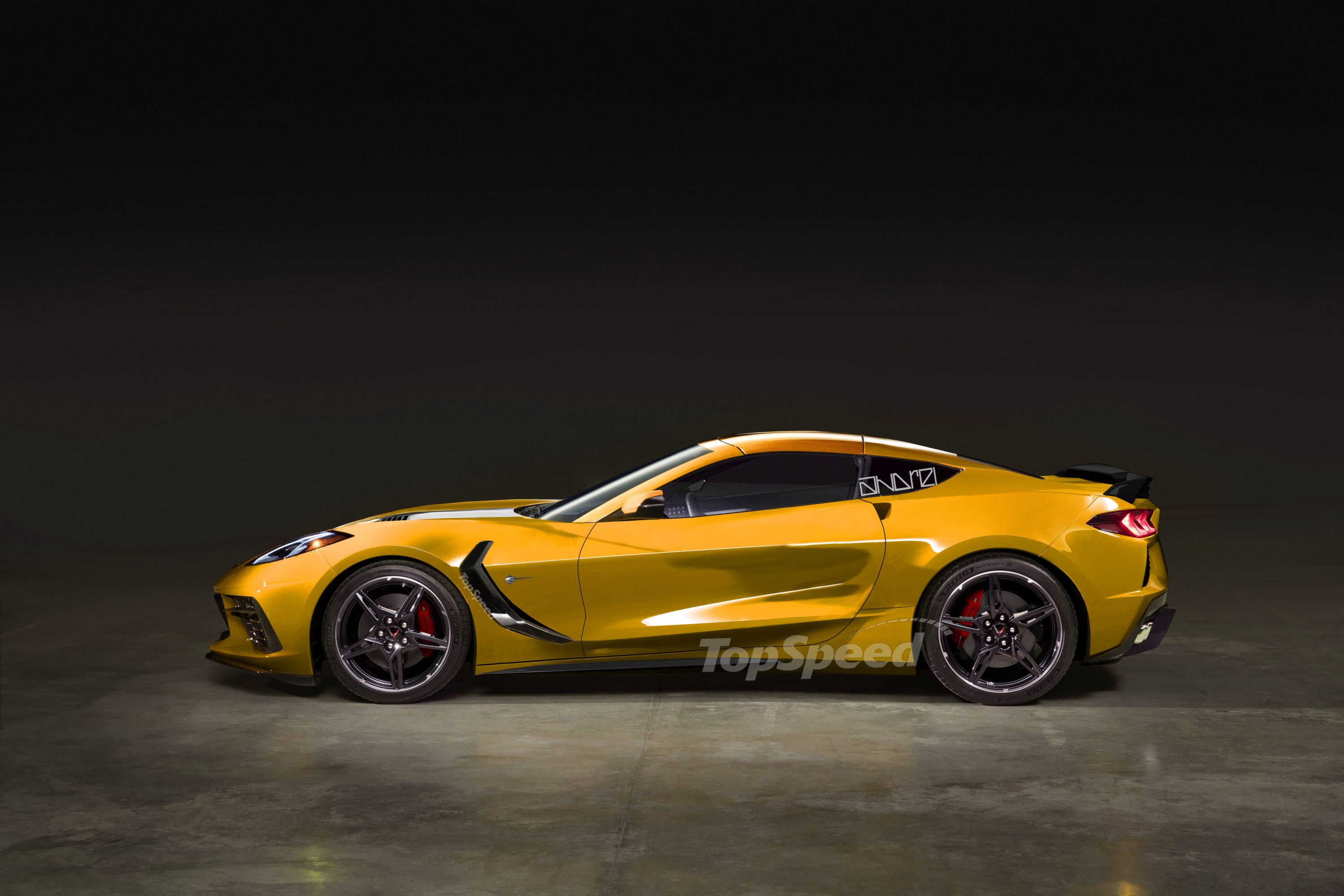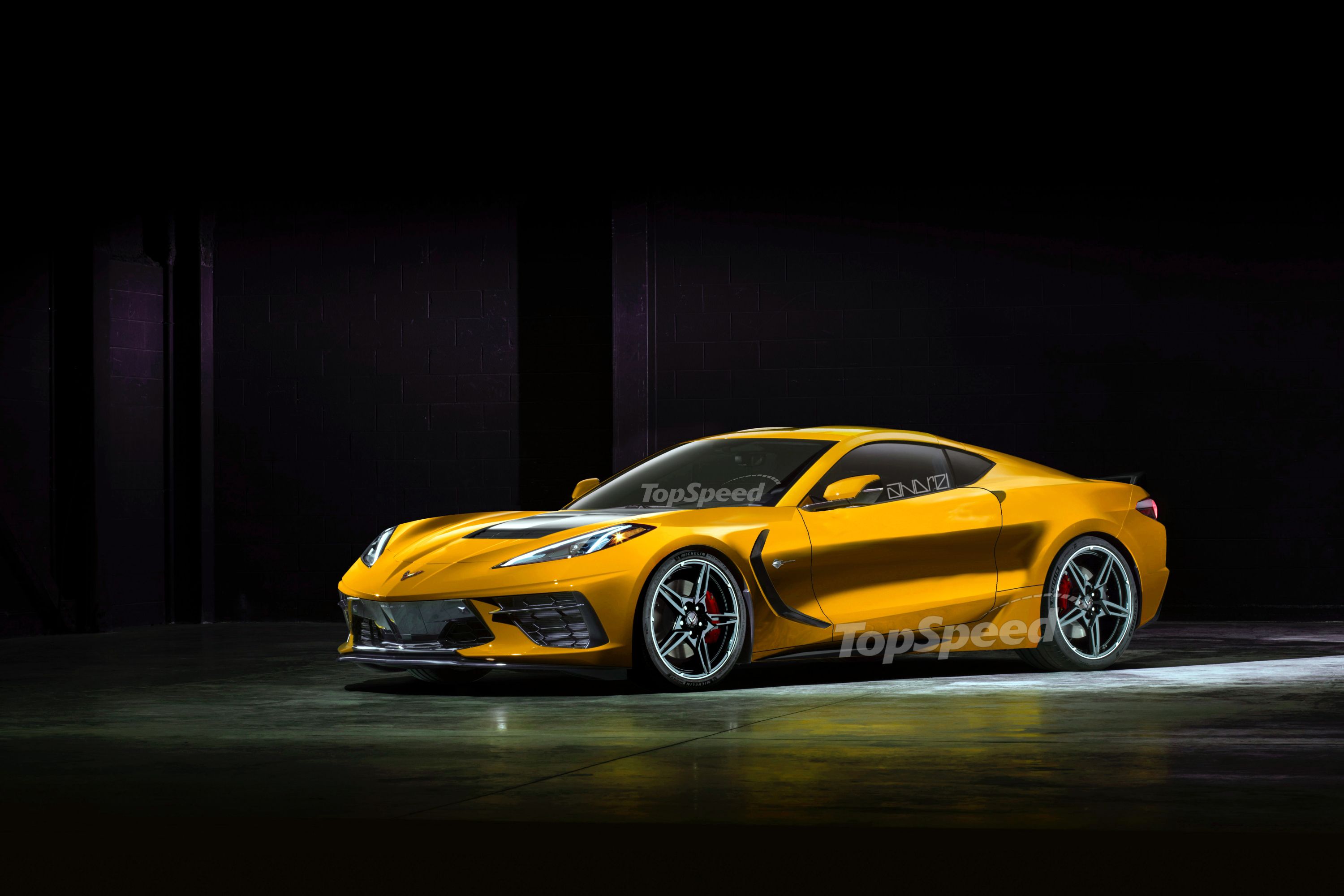Chevrolet really got people talking with the location of the engine in the new C8 Corvette Stingray. The fact that the car is mid-engined made headlines, as did the slew of advantages this new configuration brings. There are plenty of upsides to a mid-mounted engine, but in spite of all that, some people aren’t thrilled by the new Corvette and they say they would have preferred if Chevrolet had kept it front-engined, in-keeping with tradition.
It seems that the people who share this view all agree that the Corvette nameplate is synonymous with the FR layout. Some go on to argue that the C7 was already mid-engined (well, front-mid-engined, anyway) and that there was no need to radically change the formula, just find ways to improve upon what was there.
Chevy, on the other hand, says it had just about reached the upper limit of what it could do with the front-engined Corvette, on top of the fact that there had been talks about shifting the Corvette to a mid-engined layout for decades. The automaker is adamant it made the right decision and that the mid-engined C8 is a better car than a front-engined C8 could ever have been.
And, it still looks distinctly Corvette-esque, even though its proportions might seem off due to the new layout. This essentially means that the C8 will probably still appeal to most existing Corvette fans, but at the same time, attract new buyers that may have been looking to buy something similar but far more exclusive and expensive. Is this the Corvette that will put a dent in Ferrari, Lamborghini, or McLaren’s sales? Probably not, but it will definitely affect the AMG GT, Porsche Cayman, 911, BMW Motorsport, and Audi RS and R8 sales, though, as well as the second-hand supercar market too.
Only time will tell just how big its impact will be, but while we wait, we can still imagine what a front-engined C8 Corvette Stingray may have looked like.
Why did Chevy put the 2020 C8 Stingray’s engine in the middle?
Chevrolet is proud that it finally put the Corvette’s engine where it says it knew it belonged for decades - the idea was always on the table whenever company big wigs began discussing new Corvette generations, but they always found reasons to abandon the idea before going forward. So what are all the claimed benefits brought about by the mid-engined layout, and could they have been obtained with a front-engined platform similar to the outgoing C7 Stingray’s?
We’ll analyze them one by one - the first on the list is weight distribution.
The big advantage this has is that it pushes the rear tires down more and allows the car to get its power down better. This is one of the reasons why the C8 is able to sprint to 60 mph in under 3 seconds with under 500 horsepower - a combination of more grip on the rear and sticky sport tires.
The manufacturer argues that having the driver closer to the front axle of the car improves the sense of control that the driver has - there is less car between the driver and the axle, so the car will feel more responsive, according to Chevrolet. Another plus point that Chevy mentions is the improved view out the front - this obviously has all sorts of positive implications, but it is especially useful when driving quickly on a track because it allows the driver to better judge where the car is, and nail apex after apex with more ease.
What if the 2020 Chevy C8 Corvette was Front Engined?
How many of the points mentioned above could have been achieved without having to resort to moving the engine? Well, moving more weight onto the rear axle could have been achieved even without having to move the engine itself by reshuffling some components from the front to the back. Realistically, though, going from 50/50 to 40/60 without moving the engine itself would have been tricky, and it would most likely have resulted in wayward handling given that it could have upset the balance the car already had.
The C8 will undeniably feel quite different to drive compared to the C7, and I’m sure both feel balanced in their own way. They will also require different driving techniques, especially when being driven quickly and/or close to the limit. Since the C8 has more weight on the back tires, they will not lose grip as easily as they do in the C7, but at the same time, it’s been known for mid-engined cars to be more difficult to control once rear tire grip has been lost. Both cars will have to be driven back to back to spot what the differences are and how big they are.
What would a front-engined 2020 C8 Corvette Stingray look like?
|
|
ids=852257,852258 |
no_overlay=false |
before_label=Front-engined Corvette C8 rendering |
after_label=Chevrolet Corvette C8> |
Looking back at the C7 Corvette, it’s not hard to imagine what this new C8 would have been like had the engine been kept in the front. Firstly, the greenhouse would have remained towards the rear of the car, behind the elongated hood.
This, in turn, means that the entire front part can be lower, and there is less of a need for the power bulge, although it would still probably be needed on any of the supercharged Corvette models that will follow the Stingray.
The shape of the greenhouse wouldn’t have been that much more different, and in creating these three renderings to illustrate what a front-engined C8 could have looked like, I didn’t really reshape it - I just moved it back to where it probably would have been with the engine up front and just tweaked its shape ever so slightly. I based the distance by which it had to be moved on the proportions of the C7, and I think the result is quite credible.
For the front area, I also raised the headlights by an inch, maybe two, and I did the same for the surrounding bodywork. I’m sure that if the engine had been kept up front, even with the dry sump setup for the V-8, it would still have required a higher hood to accommodate everything.
One other change I made has to do with the exhausts.
The vents that fed air to the engine, located towards the back of the doors, also had to be reimagined, because they would not be needed on a front-engined car. So I just flipped them around and placed them roughly where the C7 Corvette had its side vents. This way they are basically the same shape and they also serve a functional purpose. Oh, and I also added the Stingray logo on the front fenders.
Did Chevrolet go down the right path by making the 2020 C8 Corvette Stingray mid-engined?
Well, if you read the press release, then the answer is an emphatic: “Yes!”.
Another emphatic “Yes!” would be the answer once you discover that while the 2020 C8 Corvette hasn’t fully sold out for the current model year, it’s really close to selling out already. We don’t exactly know how many units Chevy wants to build per annum, but a recent Autoblog report says it’s almost sold out for the 2020 MY. This does prove the fact that the mid-engined C8 will be a strong seller, and that people do generally like it, even if not everybody loves every part of it; overall, it looks like it’s shaping up to a be a success story.
Further reading
When Can You Buy the C8 Corvette Convertible, Z06, Grand Sport, ZR1: A Timeline
Wait, the All-New 2020 Chevrolet Corvette C8 is Priced How Much?!
Read all about the mid-engined Corvette concepts that never made it to production!
Read our speculative review of the 2020 Chevrolet Corvette Zora ZR1
Read our full review of the 2019 Chevy Corvette ZR1
The 9 concepts that led to the mid-engined Chevrolet Corvette C8



